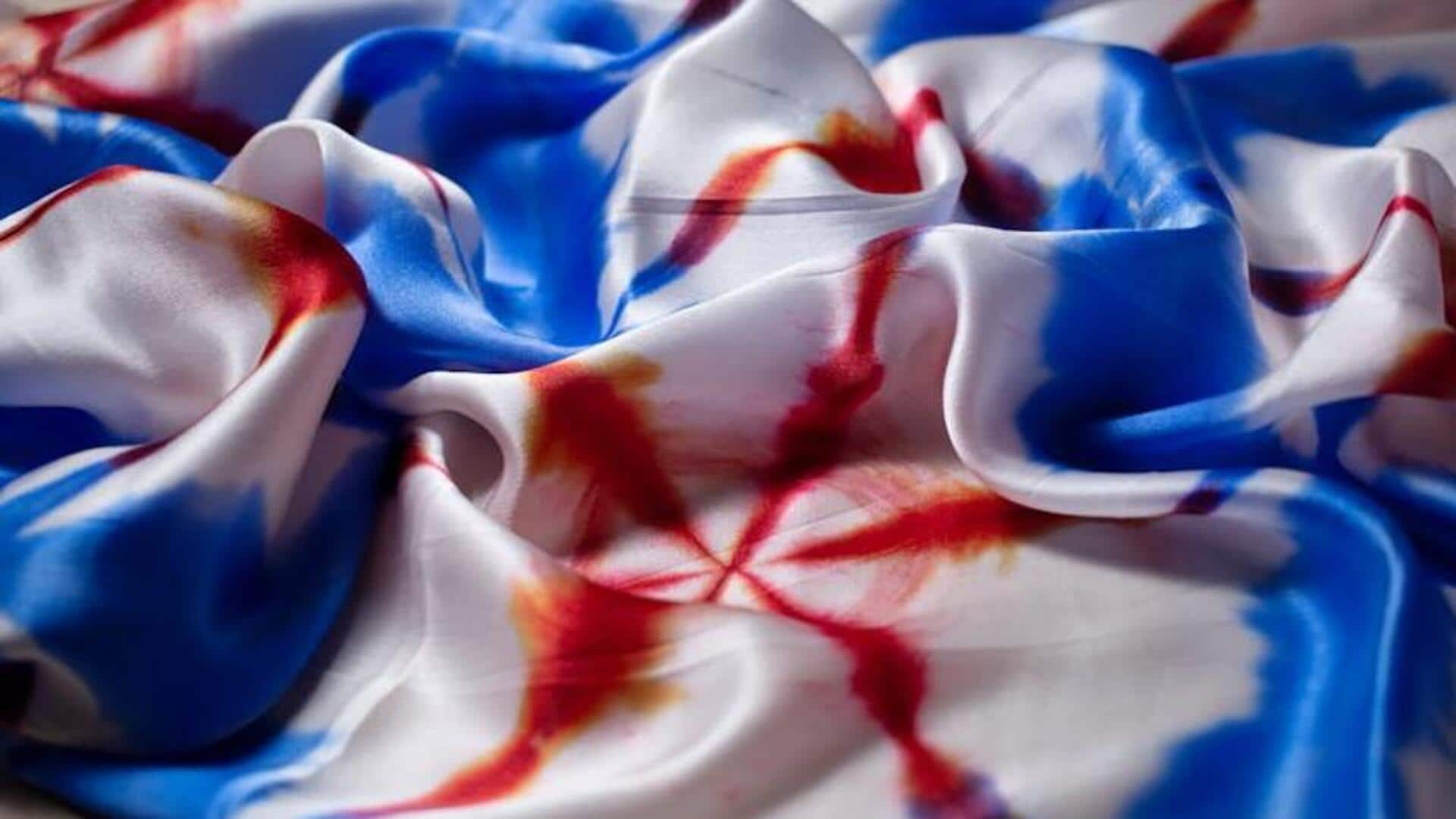
Exploring tie-dye techniques
What's the story
Tie-dye, the colorful art of creating vibrant patterns by folding, twisting, pleating, or crumpling fabric and dyeing it with various shades It originated centuries ago in different cultures and transformed into a symbol of individuality and freedom during the 1960s. Now, tie-dye serves as a go-to technique for crafting unique textile designs, providing a canvas for limitless creativity.
Preparation
Choosing the right materials
Start tie-dye by choosing the right materials. Cotton, linen, and silk are ideal for absorbing dye. Synthetic fibers won't hold dye as well, leading to faded colors. Opt for tie-dye or fabric dyes for bright and lasting hues. You also need rubber bands or strings for binding, and plastic gloves to keep your hands stain-free.
Technique
Mastering folding techniques
The key to achieving your desired tie-dye pattern lies in how you manipulate your fabric before dyeing. The spiral twist: This classic look is achieved by simply pinching the center of your fabric and twisting it into a spiral. Secure it with rubber bands, and you're ready to dye! The accordion fold: Want cool stripes? Just fold your fabric like an accordion and bind it at intervals.
Dyeing
Applying dyes with precision
Once you've prepared your fabric with your chosen technique, it's time to apply the dye. To apply the dye with precision and minimal mess, use squeeze bottles to apply different colors directly onto specific sections of your bound fabric. Soak each section thoroughly but avoid over-saturating to prevent colors from bleeding into each other excessively.
Finalizing
Setting your artwork
Once dyed, wrap your project in plastic wrap or place it in a plastic bag to prevent it from drying out while the dye sets; this process typically takes around 24 hours but can vary depending on the specific dye used. After the setting time has elapsed, rinse out any excess dye under cold water until the water runs clear, then wash separately in warm water with a mild detergent.
Maintenance
Caring for tie-dyed fabrics
To keep your tie-dyed items looking fresh for longer, you should wash them separately for the first three washes at least, because there's likely still some excess dye that'll bleed out during the first few cycles. Go for gentle detergents and skip the bleach - you don't want harsh chemicals fading those vibrant colors before their time.